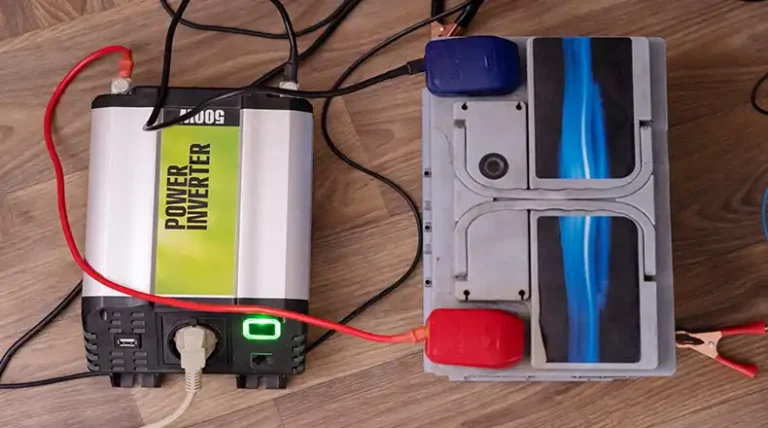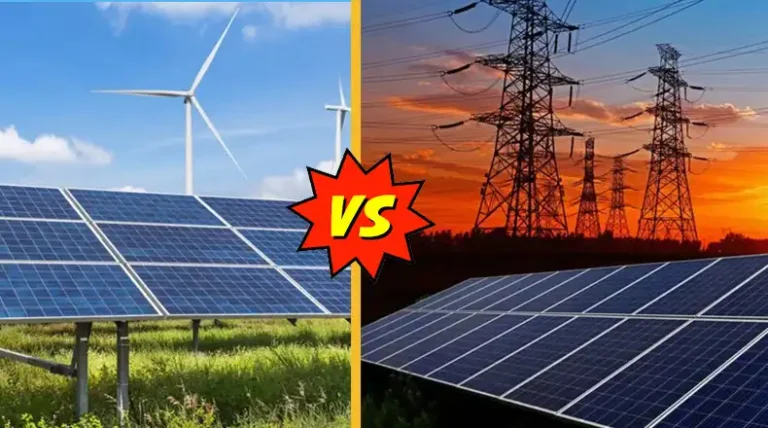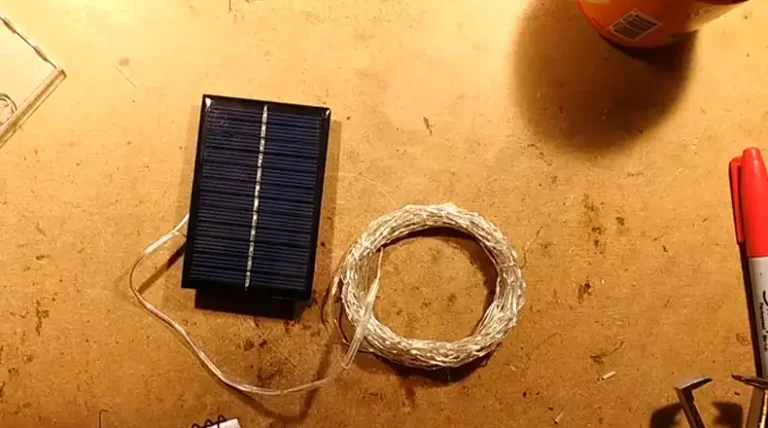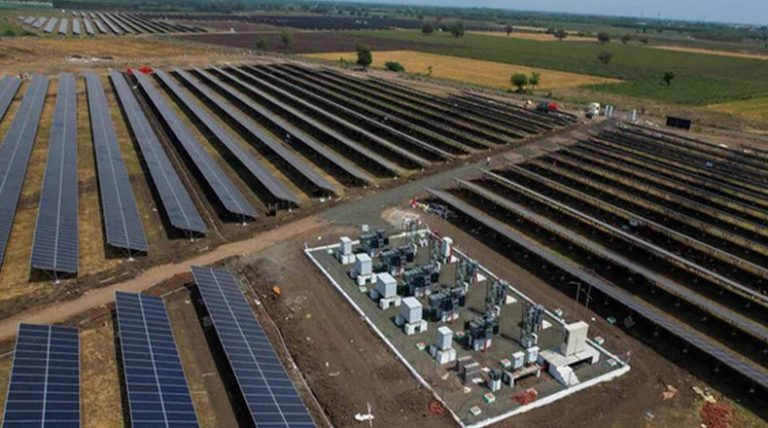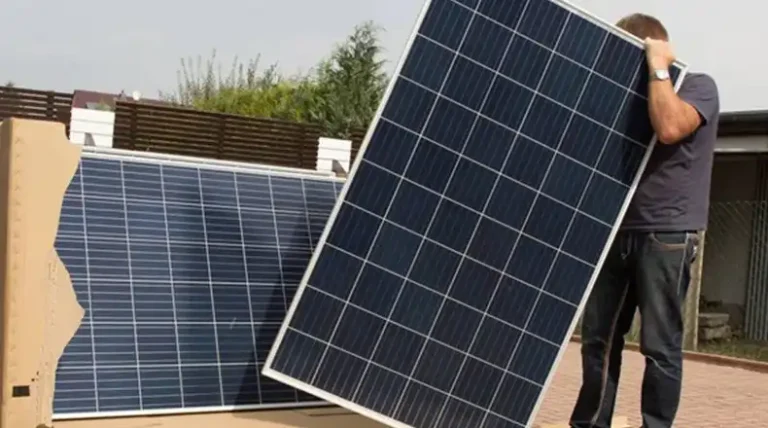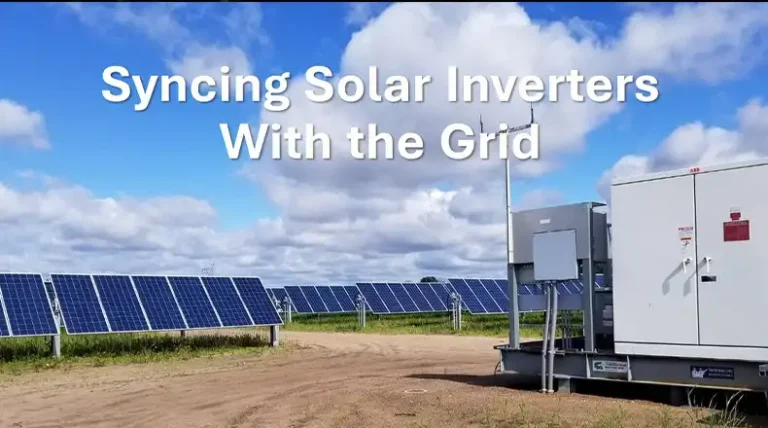Solar DC to AC Converters Without a Battery
Installing a solar photovoltaic (PV) system is a great way to utilize renewable energy while reducing your electricity bills. But the high upfront cost of batteries for energy storage makes some homeowners wonder – can I use my solar panels without batteries?
The short answer is yes – with the right equipment, you can use solar power directly without battery storage. Specialized devices called grid-tie inverters convert DC electricity from solar panels into AC power for immediate use.
However, there are also downsides to consider with batteryless solar setups regarding reliability, expandability, and resiliency during outages. There’s no one-size-fits-all best approach.
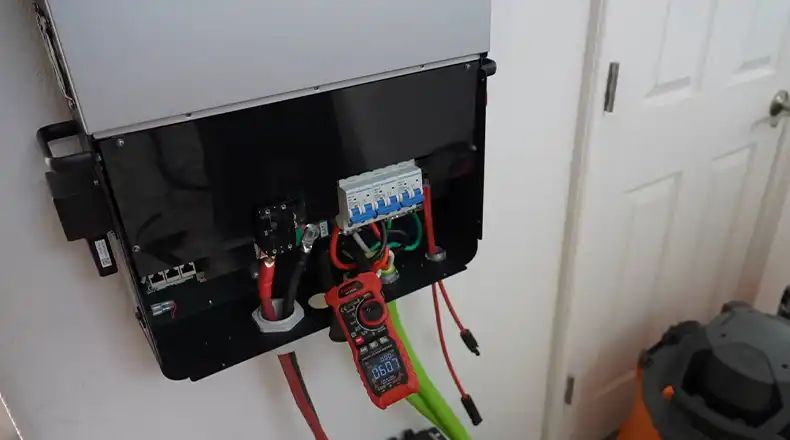
Key Takeaways
In this comprehensive guide, we’ll cover:
- The different types of solar inverters and converters that work without batteries
- Key factors that determine which batteryless solution fits your site
- Pros, cons, and use case scenarios for off-grid vs grid-tied batteryless solar
- Installation and precautionary steps for safe operation
- Potential upgrades to expand the system with battery storage later
By the end, you’ll understand your options to get solar energy without batteries along with considerations for long-term flexibility. Let’s jump in!
Is it Possible to Operate Solar Panels and an Inverter Without a Battery?
Certainly, you can utilize a solar panel and inverter without a battery. In this setup, the solar panel will transform sunlight into DC electricity, which the inverter will then convert into AC electricity. This AC electricity can be employed to operate devices or fed into the electrical grid.
Nevertheless, it’s important to recognize that lacking a battery means you won’t be able to store surplus electricity generated by the solar panel. Consequently, during periods without sunlight or when the solar panel output is insufficient for your device’s needs, the solar panel and inverter system won’t be able to supply power. Moreover, if the system is directly powering devices, fluctuations in sunlight could lead to interruptions in the power supply.
Different Types of Solar DC to AC Converters Without Batteries
There are three main devices to convert raw solar panel DC output into grid-compatible AC power without needing batteries:
Grid-Tie Solar Inverters
Grid-tie inverters synchronize the DC input from solar panels to match your home’s voltage and power quality requirements. This allows backfeeding solar-generated AC power to directly offset the building consumption.
Any excess solar energy gets exported back to the utility grid. This earns credit under net metering programs and runs your meter backward! No battery storage is involved with plain grid-tied systems.
Pros:
- Simplest design; low hardware cost
- Leverage net metering for bill savings
- Grid acts as virtual energy storage
Cons:
- No backup power during grid failures
- Oversizing can trigger fees without batteries
- Requires grid connection
Off-Grid Inverters
Off-grid solar inverters take DC power from panels and convert it into AC electricity independent of the utility grid. They allow using solar power directly without batteries but have very limited capacity.
Most basic off-grid inverters max out below 3,000 watts – enough for small loads only. This makes them impractical for whole-home usage unless paired with an oversized solar array and battery bank.
Pros:
- Doesn’t rely on utility grid
- Can power small remote loads
Cons:
- Very low power capacity
- No energy storage – solar intermittency issues
- Requires huge solar overload to directly run AC appliances
MicroInverters
Microinverters maximize solar array output by mounting small inverters at each panel vs a single large central inverter. This enables optimizing production panel-by-panel.
Pros:
- Simple system design; quick installation
- Panel-level MPPT optimization
- Easy to expand later
- Shade tolerant
Cons:
- Doesn’t work without grid or batteries
- Higher hardware cost than string inverters
Now that we’ve compared the main grid-tied and off-grid batteryless solar options, let’s dig into ideal use cases and key considerations for installation success…
How To Use Solar Panels With DC To AC Inverter Without Battery
With the right inverter or converter type, solar panels can generate usable AC power without batteries acting as intermediary storage. However, the feasibility depends greatly on the intended use case and site-specific factors.
Step 1: Sizing the System Properly
The solar array size must be matched properly to anticipated electrical loads to avoid excess unutilized capacity. Oversized solar without storage risks generation limits shutdowns or wasted potential savings.
Rule of thumb: Size the solar DC nameplate rating similar to the peak site AC power demand. This ensures full utilization of the array’s output without overproduction beyond immediate usage.
Step 2: Grid-Tied vs Off-Grid Installations
Grid-tied systems have a much easier time utilizing excess solar electricity compared to off-grid sites:
- Net metering enables exporting extra solar kWh to the grid as credit
- The utility grid acts as virtual energy storage to offset night usage
In contrast, off-grid solar without batteries suffers from intermittency issues:
- Must massively oversize the PV array to power loads directly
- No grid to soak up excess power during peak solar hours
- Capacity limited by small off-grid inverter size
So while technically feasible off-grid, the hardware cost, complexity, and reliability challenges make batteries almost mandatory.
Step 3: One-to-One Panel-Inverter Ratio
Using microinverters or power optimizers to run DC/AC conversion at each panel avoids mismatches and lost productivity from underperforming panels. This maximizes total power generation.
Central string inverters see the entire array as a “weak link” system – they’ll ramp down output to match the lowest-producing panel. Distributed microinverter architecture corrects this source of energy loss.
Step 4: Grid Stability & Reliability Concerns
Safely integrating high solar penetration levels poses challenges to grid stability as traditional utility generation gets displaced. This requires proper inverter settings and limitations on export capacity to prevent harming power quality.
Likewise, grid-tied solar offers no backup capability during outages. Building a hybrid system with batter storage avoids both issues while still harnessing solar savings under normal conditions.
Why Grid-Tied & Hybrid Inverters Need Batteries
Earlier we mentioned how standard grid-tied and hybrid inverters cannot safely operate without batteries connected. Let’s explore why batteries are mandatory for these setups:
- Need Stable DC Input Source
Unlike off-grid inverters that convert variable solar input directly, grid-tied and hybrid inverters rely on steady DC voltage from an upstream charge controller and battery bank.
The fluctuations in solar panel output exceed these inverter’s input tolerances. They fault without the buffer of batteries to “smooth out” DC irregularities first.
- No Inherent Voltage Regulation
Batteries give grid-tied/hybrid inverters a consistent excitement source at safe DC voltage levels to invert from. This property sets AC waveform output before synchronizing with the grid or loads.
Without regulation front-end regulation from batteries and charge controller circuits, panel fluctuations could damage connected equipment or trip safety mechanisms during transient spikes.
- Critical Backup Power Function
Hybrid systems leverage batteries to keep providing power during grid interruptions. This gives homeowners uninterrupted backup critical loads despite outside conditions disrupting solar input.
In short, the battery energy storage component gives grid-tied and hybrid systems reliable, resilient operations that batteryless configurations cannot match.
Now let’s examine the pros and cons of eliminating batteries from the equation…
Benefits of Using Solar DC to AC Converters Without Batteries
While giving up energy storage poses some downsides, removing batteries from the equation also provides advantages:
- Lower Upfront Cost: The high price tag of quality solar batteries makes them the single most expensive part of many PV installations. Eliminating batteries significantly reduces system costs.
- Improved Cost Effectiveness: Since batteries only last 5-10 years, they must be replaced multiple times over a solar array’s 25+ year operational lifespan. Eliminating this recurring cost results in a faster payback period.
- Simplified Maintenance: Lithium batteries require strict climate controls and electronic safeguards with little tolerance for user neglect or abuse. Avoiding batteries removes risks of faulty charge controllers or temperature excursions degrading the system’s ROI.
- Expandability Later On: Choosing high-output grid-tie solar inverters and pre-wiring conduit lines from the start makes integrating batteries easy down the road. This builds future-proofed flexibility into your system.
While the plug-and-play nature of batteryless grid-tied solar has clear incentives, buyers should also weigh the potential limitations…
Drawbacks of Using Solar DC to AC Converters Without Batteries
Despite the cost and maintenance incentives above, eliminating batteries has major negative impacts on system capabilities including:
- No Backup Functionality: With no capacity to soak up excess solar generation or power critical loads, homeowners are left in the dark during grid failures. Even minor outages shut down appliances.
- Oversupply Penalties: Net metering policies limit the export compensation for excess solar production fed onto the grid. Systems without batteries risk hitting overgeneration fees during peak output.
- Degraded Grid Stability: Pushing excess, intermittent solar power onto the distribution grid poses risks to balancing load relative to traditional generation assets. This requires safety limitations on grid-tied solar sizes.
- Limited Control & Independence: Relying solely on grid acceptance of real-time solar supply removes the freedom to use your self-supply for local energy needs directly. Exported solar essentially powers neighbors!
Homeowners aiming for the greatest energy resilience should strongly consider the backup power and control benefits integrated battery storage unlocks in solar designs.
When to Consider Using Solar Converters Without Batteries
While eliminating batteries has compromises, grid-tied solar shines for specific consumer types. Strong matches include:
- Locations with net metering incentives make bill savings a priority
- Sites with ample south-facing roof space to max production
- Limited budgets unable to afford batteries currently *Backup power concerns already satisfied by standalone generator
Homeowners seeking true grid independence or with unreliable local utility service lean more towards off-grid and hybrid solar configurations, however.
There’s no definitively superior path – choose solar components catering closest to your family’s needs and priorities!
When Investing in a Solar Battery Bank Makes Sense
In contrast, situations where investing in batteries becomes strongly advisable from the start include:
- Frequent grid reliability issues and weather outages
- Residential demand charges from peak energy usage
- Meeting sustainability or climate action commitments
- Seeking greater control over self-consumed solar usage
In these cases, the long-term benefits of storing solar energy onsite instead of directly exporting to the grid become compelling.
Final Thoughts
Getting started with solar energy no longer requires expensive battery banks breaking the bank. Many homeowners actually benefit more from direct-use systems feeding excess generation to the grid. But others need the sustained backup power, usage-optimizing capabilities, and independence that storage confers during intermittent weather or grid failures.
Hopefully, this guide gave you a comprehensive basis to evaluate if starting batteryless now makes sense, with the option to retrofit storage later as needs change! Thanks for reading – share your feedback or other solar power topics you’d like us to cover in the comments below!
Frequently Asked Queries
Can I Run AC on The Solar Panel Without A Battery?
Running large AC appliances directly from small off-grid solar inverters is rarely feasible. High starting surge currents often exceed inverter maximums. Grid-tied systems can offset partial AC loads indirectly as the panels feed power back to the building’s electrical system. However, the lack of battery storage limits the capacity for running ACs sustainably.
Can A Solar Inverter Work With A Normal Battery?
No, normal batteries like automotive or marine lead-acid are ineffective for solar inverters. They lack proper voltage regulation and aren’t engineered for repeated deep discharge/recharge cycling from PV systems. Solar-specific lithium-ion or lifepo4 batteries with built-in battery management systems are required for compatibility and longevity.
Can I Run A 1.5-ton AC on Solar Without Batteries?
Running a 1.5-ton AC unit on solar power without battery storage is extremely impractical. You would need an oversized off-grid inverter with 5kW+ output capacity along with surplus solar panels. This costly setup sacrifices efficiency and reliability compared to using solar with adequate battery generator backup instead of the utility grid.

